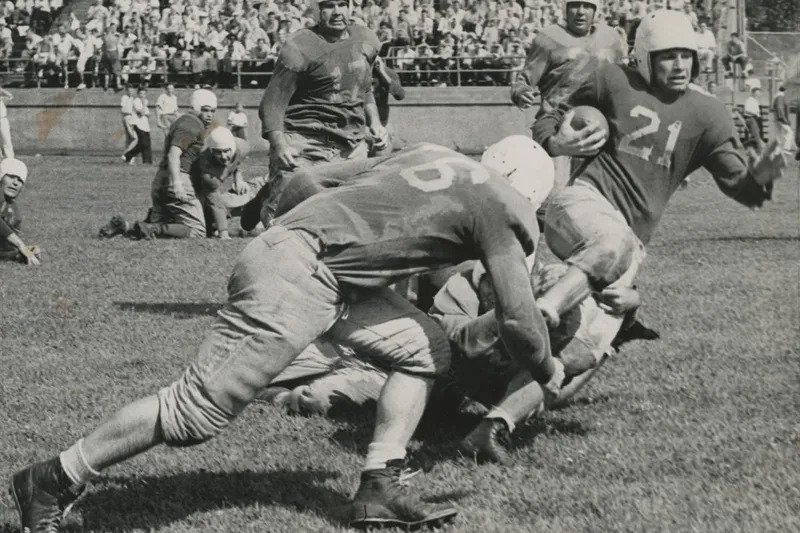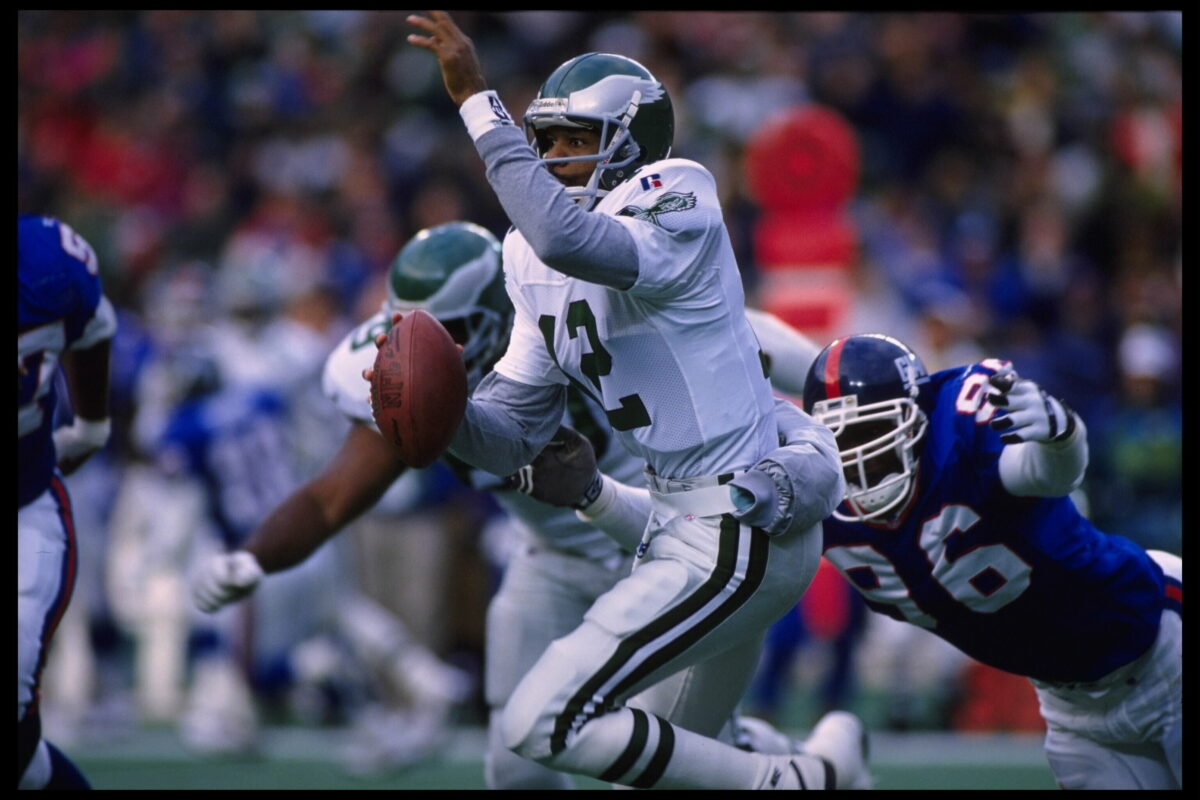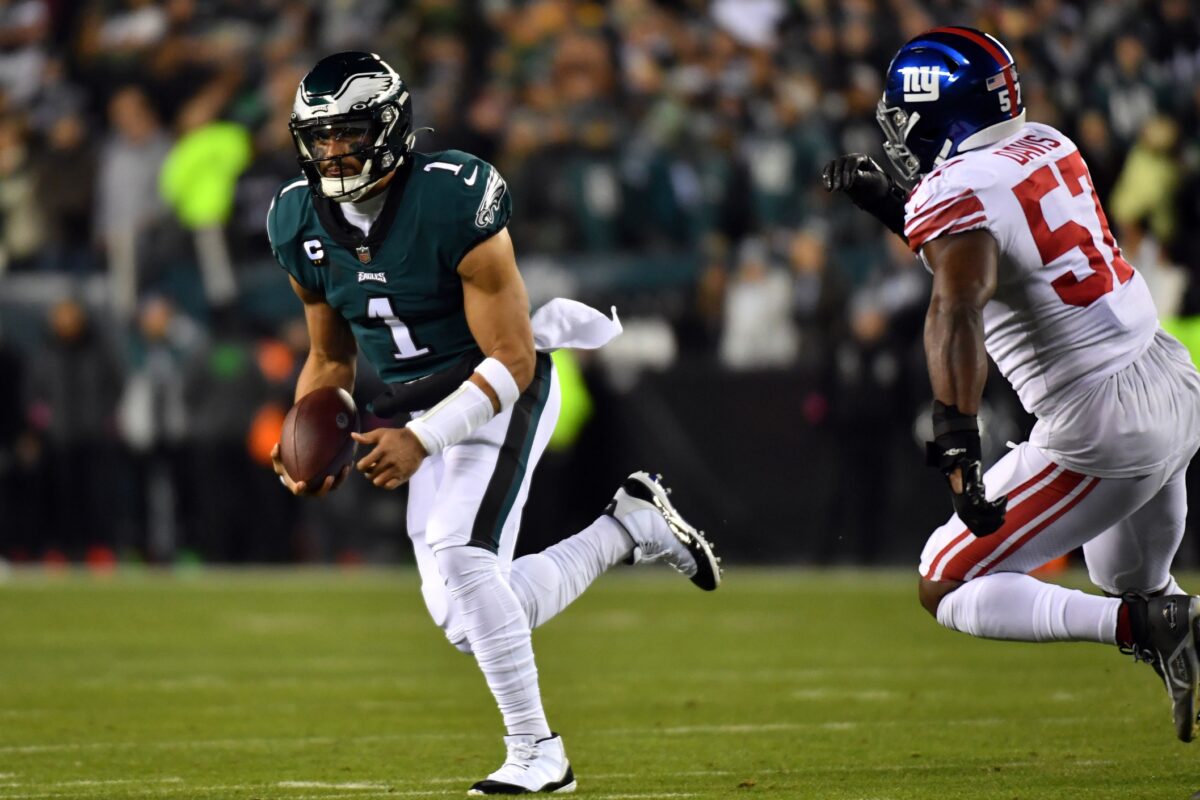Now that the Philadelphia Eagles re-released their long-awaited Kelly Green alternative uniforms, fans flocked to Pro Shops to gear up for the season. Now that the iconic green threads are back, a bigger question prevails: where does the actual “Eagle” come from?
Traveling more than 100 years back to the team’s birth before its present-day name: the Frankford Yellow Jackets. The team came to be in the early 1920s when the Frankford Athletic Association’s Yellow Jackets had a reputation for being one of the best football teams in the country.
After seeing a 6-2-1 success record against teams in the NFL in 1922 and 1923, the Yellow Jackets became a franchise in 1924. The team saw success in the next few years, even getting to the Championship in 1925.
Five years later, the team struggled due to the stock market crash and the inability to pay players. Frankford Stadium was damaged by a fire, meaning they struggled to find a facility to play games in. The team was downgraded to finish the season as a traveling team.
Considering all these factors, the Yellow Jackets suspended operations after the 1931 season.
Though the Yellow Jackets failed, the NFL spent over a year searching for a new team to operate in Philadelphia.
Enter Bert Bell (and later, Lud Wray, who would be a companion growing up before parting ways. They would come back together to purchase the soon-to-be Eagles.)
Born to John C. Bell and Fleurette de Benneville Myers in 1895, Bert grew up in a very wealthy family. His dad was an attorney in Pennsylvania, and his mother’s lineage predated the American Revolutionary War. Bert attended his first football game with his father at six years old, where the love of the fun began.
John C.’s two sons grew up being well taken care of and under their father’s passions, as mentioned in John Eisenberg’s The League—This chapter of the book talks about Bert’s interesting young adult life.
“Decades later, Bert’s son, Upton, said of him, ‘Although he came from a proper conversation Republican family, Bert walked with a swagger as a kid and found a way to talk out of the side of his mouth,” the book read. “He decided that everything he was going to do was going to do was in some ways different from the way they acted.”
Bell grew up loving football and played the game before volunteering for military duty, servicing at Châtel-Guyon in France with his friends. The armistice brought Bert home in the fall of 1919, where he returned to the game.
This is where the story is interesting. Bert realized he could still live life how he wanted without consequence due to his father’s money. So, what did this mean? Bert indulged in betting, so much so that during one game, he wagered his Marmon roadster and an additional stake that the Quakers would beat Dartmouth. This led to a slippery slope of betting when his family intervened to tell him to “grow up ultimately.” Bert’s response was negative, to which his father insisted on giving him $100k. To no one’s surprise, Bert accepted the money – not the engagement – and blew it all on one weekend.
His father no longer cut him off from getting free money, saying Bert could work at one of his father’s hotels instead.
But in 1932, an opportunity for Bert to purchase the expansion team in Philadelphia that the NFL sought came to fruition. His father, of course, thought this was a silly idea, but Bert was undeterred.
Bert got $2,500 needed for the team and assumed the $11,000 in debt left over from the Yellow Jackets. That same day, in what could be a final act of defiance against his father, who assumed this idea to be crazy, Bert was out on the town one day after buying the team, another act John C. thought was crazy.
“At the corner of Broad and Chestnut, two major streets, he glanced up and saw a billboard promoting President Franklin Roosevelt’s National Recovery Act, emblazoned with its symbol, a bald eagle. Bell had an idea. He would call his new team the Philadelphia Eagles.” The League says,
“When John C. Bell died two years later and went to his grave believing Bert had again done something foolish.”
[lawrence-auto-related count=5 category=15489]



